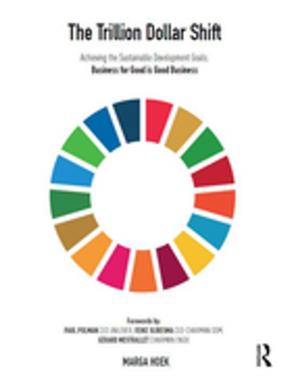Public Goods versus Economic Interests
Global Perspectives on the History of Squatting
Nonfiction, History, Modern| Author: | ISBN: | 9781317313267 | |
| Publisher: | Taylor and Francis | Publication: | July 15, 2016 |
| Imprint: | Routledge | Language: | English |
| Author: | |
| ISBN: | 9781317313267 |
| Publisher: | Taylor and Francis |
| Publication: | July 15, 2016 |
| Imprint: | Routledge |
| Language: | English |
Squatting is currently a global phenomenon. A concomitant of economic development and social conflict, squatting attracts public attention because – implicitly or explicitly – it questions property relations from the perspective of the basic human need for shelter. So far neglected by historical inquiry, squatters have played an important role in the history of urban development and social movements, not least by contributing to change in concepts of property and the distribution and utilization of urban space. An interdisciplinary circle of authors demonstrates how squatters have articulated their demands for participation in the housing market and public space in a whole range of contexts, and how this has brought them into conflict and/or cooperation with the authorities. The volume examines housing struggles and the occupation of buildings in the Global "North," but it is equally concerned with land acquisition and informal settlements in the Global "South." In the context of the former, squatting tends to be conceived as social practice and collective protest, whereas self-help strategies of the marginalized are more commonly associated with the southern hemisphere. This volume’s historical perspective, however, helps to overcome the north-south dualism in research on squatting.
Squatting is currently a global phenomenon. A concomitant of economic development and social conflict, squatting attracts public attention because – implicitly or explicitly – it questions property relations from the perspective of the basic human need for shelter. So far neglected by historical inquiry, squatters have played an important role in the history of urban development and social movements, not least by contributing to change in concepts of property and the distribution and utilization of urban space. An interdisciplinary circle of authors demonstrates how squatters have articulated their demands for participation in the housing market and public space in a whole range of contexts, and how this has brought them into conflict and/or cooperation with the authorities. The volume examines housing struggles and the occupation of buildings in the Global "North," but it is equally concerned with land acquisition and informal settlements in the Global "South." In the context of the former, squatting tends to be conceived as social practice and collective protest, whereas self-help strategies of the marginalized are more commonly associated with the southern hemisphere. This volume’s historical perspective, however, helps to overcome the north-south dualism in research on squatting.















